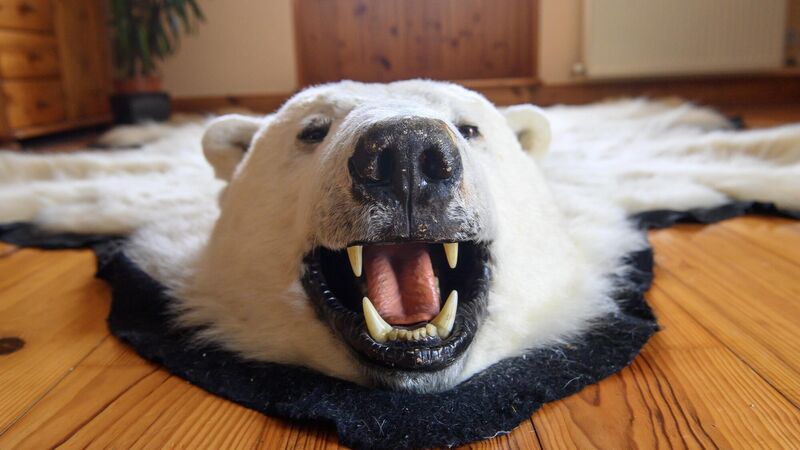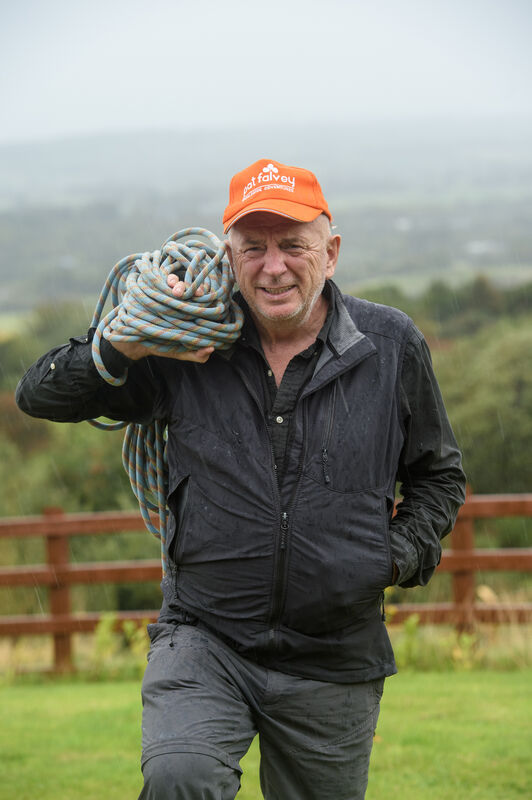My Life with explorer Pat Falvey: I brought a polar bear through customs

Nanook the polar bear, at rest at Pat Falvey's house. Picture Dan Linehan
It was an unusual introduction and one Irish customs staff will likely recall for years to come.
“Yes, that’s right, I have a polar bear to declare.”
They had initially assumed I was joking until their collective gaze was drawn to the animal in my six-wheeler trolley.
By now, he had become something of a spectacle with strangers gathering to take pictures of this magnificent creature. We had basically jammed the whole airport.
Having been shot by a woman desperately trying to protect her family, Nanook’s was a cautionary tale about the dangers of climate change.
I wanted people to learn from his death, which influenced my decision to bring him back to Ireland.
He now accompanies me to primary schools across Ireland as a learning tool to educate children about global warming.
Nanook came to his demise in Nunavut in northern Canada, not because he was a sought-after trophy, but because of what is happening on the ice today due to hunger.
We were on an expedition to the North Pole when the shooting occurred. It just so happened that the polar bear found his way into a community of Inuit people.
You might say that’s how I came across him. Traditionally, polar bears identified food when seals found their way onto the ice.
The animals were able to chase the seals and catch them, and of course, eat them on occasion. What is happening now is that they can’t get seals.
This is why increasingly more people are finding polar bears on their land. It’s prevalent in the Arctic region, especially among First Nation communities, where you find them rustling through bins and rubbish dumps.
It happens in the polar regions when animals are very hungry. These creatures pose a great danger, especially to children.
This is precisely why Nanook got shot. The family ended up eating the meat while I took the pelts of the polar bear.

During my 36 years of exploring and adventuring all around the world, I had one very terrifying experience where I myself was tracked by a polar bear.
I was on Baffin Island-located in the Canadian Arctic Archipelago within the Nunavut territory.
Claire O’ Leary, who was the first Irish woman to do the North Pole, was with me at the time.
One night we stepped outside the tent right onto a 14-inch paw print.
We immediately had to contact the rangers to tell them what was happening.
This resulted in our relocation to a protected area where we stayed for three days until the rangers informed us the polar bear was out of sight.
Despite them being very dangerous, polar bears are probably the most iconic animals of the Arctic.
People, especially children, love to hear all about them. I have since brought Nanook to visit tens of thousands of children in schools across Ireland for talks focusing on the cost of the melting ice caps.
The most important question is what happens to the polar bear’s food source after the ice melts.
I always say that we as adults are the ones responsible for this, and a lot of them take that very seriously.
It’s amazing how the kids of today are more impacted and probably more environmentally conscious than a lot of adults.
I remember one girl’s father approaching me and asking what I told his child.
I wasn’t sure what he was talking about and then he told me that his little girl now can’t pass a light switch without turning it off.
I introduced another character in addition to Nanook to make my school visits as interesting as possible for children.
There is a small teddy named Freddy who comes with me.
He has written two books and is probably best described as an alter ego of Claire O’Leary and I.
He raises a lot of concerns for the children on global warming.
When he asks the kids about who else is in danger of sinking into the ice, Santa usually gets a mention.
It’s concerning for the kids to realise that not only are the polar bears going to go down, but Santa and his reindeer, who are positioned at the North Pole, will run into trouble too.
Children always come out with questions that are both funny and fascinating at the same time.
There was one occasion where a little girl asked me why polar bears don’t eat penguins.
I put it to the classroom. While some said it was because they were too slippery, others pointed out that polar bears are from the North Pole and penguins are from the South.
Even some of the teachers couldn’t come up with an answer.
When we asked the little girl, who was only six years old, if we got it right, she just laughed and told us it was because “they can’t get the wrappers off.”
- Pat Falvey is a Cork born mountaineer, expedition leader, polar explorer, entrepreneur, author and motivational speaker






